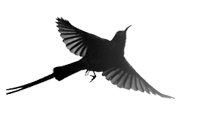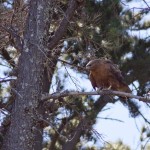2025 Update: This page was initially published 13 years ago, in 2012. At the time it reflected real time changes in the local populations of Cape Mystery Buzzards. A lot has changed since then, with Helderberg Nature Reserve, which was where most of this documentation took place, removed their Pine forests in favor of a more natural Fynbos biome. In turn, unfortunately, we lost the nesting spots for these birds. I hope this page can still provide some insight into these birds, as they still occur in other areas of the Cape, and even within other areas of the Helderberg.
The Mystery Buzzards, also known as the Cape Buzzards and Elgin Buzzards are a breed or at this point, classification of Buzzard that exist in the Western Cape of South Africa. They have been of vast interest over recent years, and as one can assume from the name, there is a lot that is unknown about these Buzzards. While there were reports of these strange Buzzards from the 80s, assumption for many years were that these were either Steppe or Forest Buzzards, though as more research was done regarding the birds, it became evident that they displayed both visual indications and nesting patterns that were inconsistent with either the Steppe or the Forest Buzzard.
Some real insight into these Buzzards and their history can be read in this piece by Lisle Gwynn, who is currently researching this species: Cracking The ‘Mystery Buzzard’ Code
-
- Jump to Buzzard
This year Tertius Gous and I discussed the potential in trying to photograph and essentially build up a database of the resident birds in the Helderberg Nature Reserve, monitoring their breeding and trying to determine just which birds are resident birds, for how long they have been residents and if they breed in the reserve. We have about a month left until the migratory Steppe Buzzards return for the summer, leaving us with little time to get as much data on the current birds as possible.
I have managed to photograph and categorize 6 different individual Buzzards at the reserve over the past few months, though records dating prior are available for some of the birds in question. I have labelled them, in a mundane way, alphabetically – Buzzard A through to Buzzard F, though as new individuals are encountered, there will be an expansion on the listings.
Amendments will be made to the information listed, as new information reveals itself. I must note that I am in no way a scientist, nor do I have any credentials. This process is done solely for the purpose of helping the research and identification of these Buzzards, as well as for monitoring their breeding progress and population density within the Helderberg Nature Reserve.
*High resolution images where available.
Mystery Buzzard – A
Years Seen: 2011, 2012
Identification: Identification of “Cape ‘Mystery’ Buzzard – A” is fairly easy in comparison to some of the other individuals. “Cape ‘Mystery’ Buzzard – A” is one of just two identified ringed Mystery Buzzards in the reserve, and is the only ringed individual with the uniform rufous appearance. The bird shows strongly uniform rufous along most of the coverts, with dark grey to black trailing edge on the primary and secondary flight feathers. The tail is light, with dark grey to black subterminal band.
Notes: This bird is almost certainly a resident in the reserve, and I have personally witnessed this individual more than any other. The first sighting was in May 2011, when I was unaware of it’s nesting location.
Breeding Status: Unknown
Mystery Buzzard – B
Years Seen: 2012
Identification: “Cape ‘Mystery’ Buzzard – B” is similar in appearance to the above Buzzard – A, but easy to distinguish by it’s lack of ring on the left leg, that could easily be noted on “Cape ‘Mystery’ Buzzard – A”, furthermore there appears to a tiny bit lighter colouring around the upper chest, which while hard to distinguish, when examined, can be noted. Another main difference between the previous Buzzard is that “Cape ‘Mystery’ Buzzard – B” appears to have slightly lighter subterminal band on the tail feathers in comparison.
Notes: This individual, over the course of August and September 2012 has been the most active in my experience, around 35-50% of all sightings were of this individual. It is unclear to me whether this is the male or the female, but I recall hearing it may be the male, with the paired female being lighter in colour. This individual currently has a nest which it seems to share with a mate, location of the nest is known and shall be monitored from a distance for any progress.
Breeding Status: Breeding, nest location known and evidence of possible successful breeding in 2012/2013 season (see Buzzard G).
Mystery Buzzard – C
Years Seen: 2012
Identification: “Cape ‘Mystery’ Buzzard – C” is the only other known individual in the reserve that is ringed (left leg). It is easy to differentiate Buzzard C from Buzzard A, the other ringed individual, based of colour alone. While Buzzard A is uniformly rufous, Buzzard C is much lighter, specifically on the breast area. The patterns and colouring on the body of Buzzard C are far more like that one a typical Steppe Buzzard, with some teardrop type white markings on the chest area. There are prominent trailing edges to the primary and secondary flight feathers, while the tail feathers of this individual are slightly more rufous than Buzzard A, but similar to that of Buzzard B, the subterminal band of the tail feathers in Buzzard C are not very prominent, but yet still fairly easily noticeable.
Notes: This individual is a new sighting for us, until recently we had assumed that there was only one ringed Mystery Buzzard in the reserve (Buzzard A), but the discovery of Buzzard C on the 16 September 2012 revealed that there were more. The fact that this bird is ringed is highly important, these Buzzards have managed to elude numerous capture attempts in South Africa, related to their research. This means that the birds are likely being ringed in another country, and are not locally bred individuals but rather visitors, or once visitors. If we are able to somehow find out where these birds are being ringed, it could certainly help a tremendous amount in the research and discovery of this species. Due to how recent of a sighting this bird is, we are unaware of whether this bird is breeding in the reserve or not.
Breeding Status: Unknown
Mystery Buzzard – D
Years Seen: 2012
Identification: The appearance of “Mystery Buzzard – D” is quite unique in that it has the most classic Steppe Buzzard markings out of the birds in the reserve, while Steppe Buzzards are highly variable, there are photographs of migratory Steppe Buzzards identical to the individual in question. The coverts are generally much lighter on this individual than most of the above birds, as is are the vents, as can be seen best in the photograph above where the bird is perched, though visible in both images. The chest markings are quite light with evidence of horizontal streaking on the belly.
Notes: Another bird that I have only recently seen present at the reserve, so little is known to me about the behaviour of the bird. He/She did not seem to be tied to a single forest, and preferred to fly from one to another, perching for short periods before repeating. This behaviour would suggest that this bird does not have a nest, though the fact that it’s yet to be monitored properly leaves us with the possibility for the observed behaviour to be erratic and different from it’s normal patterns.
Breeding Status: Unknown
Mystery Buzzard – E
Years Seen: 2012
Identification: The first thing I should point out, when looking at the images above, is that the mark on the left leg is not a ring, but rather a feather or another white object, this can be confirmed by the high resolution view of the image. The bird is likely a ‘first adult’ bird, as Tertius notes, “First adult plumage is characterized by retained juvenile outer primaries and median secondaries. The outer juvenile primaries are somewhat more faded brown than the other primaries while the juvenile secondaries (S3 and S4 counting inwards, as well as two secondaries, possibly S9 and S10, closer to the body) are shorter and more translucent because they lack the broad and distinct black tip of the adult feathers. The tail is almost adult although the subterminal band is not as dark and distinct as in adult birds.” The body of the bird appears quite Steppe-like and due to the fact that it was a fairly young bird and seen about a month ago now, there is the possibility that the patterns may have changed slightly as it matures.
Notes: When the sighting of this individual occurred, it was flying with another similar-looking bird.
Breeding Status: Unknown
Mystery Buzzard – F
Years Seen: 2012
Identification: An individual that I had previously lumped in with one of the others, until I look a closer look at the plumage. The most easily and uniquely identifiable aspect for Buzzard F is the very light center running up the middle of the much more rufous flanks. The tail too is quite light, with only light visibility of the subterminal band present.
Notes: I only have a small number of encounters with this particular bird, so information is limited.
Breeding Status: Unknown
Mystery Buzzard – G
Years Seen: 2013
Identification: At the time of sight, identification was made off the diagnostic light eyes indicating that it was a young bird. This particular individual had dark rufous, almost dark brown plumage. As it stands, as of 8 March 2013 – this was the only sighting of the bird I had gotten. The individual is what I am assuming to be the offspring of Buzzard B and the other individual which I have not been able to pin point. There were several various Mystery Buzzards that would come and go from the same location as where the nest was, though Buzzard B was seen without fail heading to the nest.
Notes: One likely identified parent, no confirmation on second parent.
Breeding Status: Not Breeding














